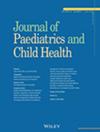Appraisal of Clinical and Anthropometric Variables as Risk Factors for Urethroplasty Complication in Primary Hypospadias
Abstract
Aim
We assessed multiple clinical and anthropometric risk factors for urethroplasty complications requiring ancillary procedures following primary hypospadias repair.
Methods
It is a prospective cohort study of boys undergoing primary hypospadias repair comparing the group of patients with urethroplasty complication (UC) who required ancillary procedure to those without complication. Anthropometric parameters were obtained intraoperatively using a calliper and goniometer.
In order to describe the discrimination ability of the potential predictors for UC, the areas under the Receiver Operating characteristic (ROC) curves were computed and univariate and multivariate logistic regression analyses were performed.
Results
The study population consisted of 108 patients. Meatal location was sub-coronal, shaft, and proximal in 71 (66%), 28 (26%), and 9 (8%) cases respectively. Urethroplasty complications developed in 27 (25%) patients: 13 meatal stenosis, 10 fistula, and 7 dehiscence.
By univariate logistic regression analysis, mal-developed urethral plate, two-stage urethroplasty, severe chordee (30° vs. 15°) and longer distance between the native meatus and the desired meatal location (11.5 mm vs. 8 mm) were significant predictors of UC. However, only meatal location (sub-coronal, shaft or proximal) stood to multivariable adjustments.
The area under the ROC curve for meatal distance (p = 0.001) exhibited a good discrimination ability in assessing the risk for complications. Meatal distance above 9.5 mm was associated with an OR of 5.6 (p = 0.002) in predicting complications.
Conclusion
In our study, the only significant independent predictive factor for urethroplasty complications was found to be meatal location. Surgical outcomes were not influenced by objectively measured parameters of the glans or the degree of chordee.


 求助内容:
求助内容: 应助结果提醒方式:
应助结果提醒方式:


